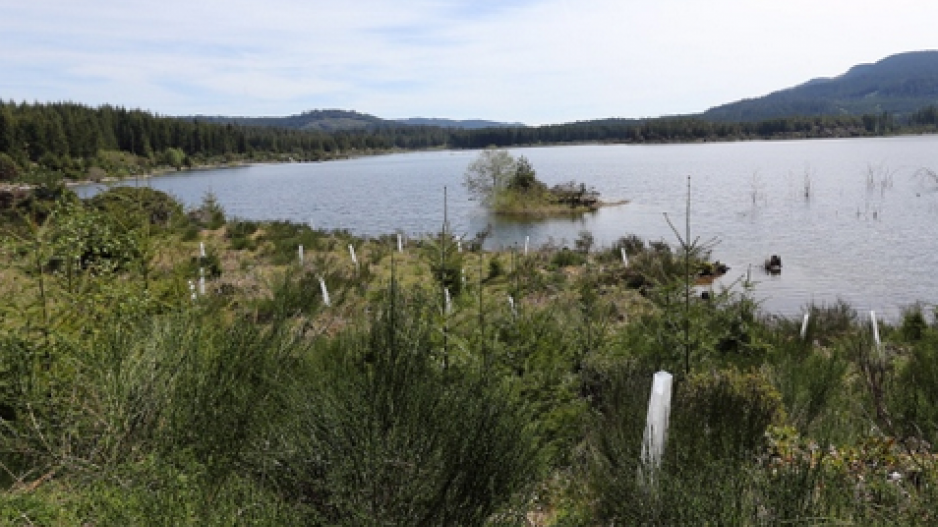Grae Dickason has been in the housepainting business for 30 years and water has never been one of his worries.
Until now.
Unprecedented up-Island restrictions amid a severe drought mean he’ll have to truck in water to power-wash the 27-unit Parksville townhouse project on his schedule before repainting it.
“When I first heard of it, I thought, that’s going to shut us down,” he said.
Parksville, like the Nanaimo Regional District — but not the City of Nanaimo — has enacted stringent Stage 4 water restrictions, banning water use for washing buildings, windows, vehicles and boats.
Dickason said his company, Home Pro Painting, has 12 employees and can afford to weather drought conditions.
“We’ve got to do our part,” he said.
It’s the many one-person painting businesses that will really feel the heat. They won’t be able to afford to truck in water, not that there are many water haulers available, he found.
He’s already planning for next year, with a view to doing power-washing projects in cooler months in case restrictions kick in again.
The Capital Regional District, in contrast, has not imposed any special restrictions and remains at Stage 1. The Comox Valley and Cowichan regional districts are at Stage 3.
As of July 9, the Capital Regional District’s Sooke Lake reservoir was 84% full — “near the low end of the range as a result of summer demand conditions arriving about a month early this year,” the CRD said.
The Stage 1 restrictions, imposed every summer, allow twice-weekly lawn watering in the morning and evening, although “the CRD may consider starting a higher level of conservation as Sooke Lake Reservoir level projections change.”
Meanwhile, the Nanaimo Regional District has taken the unprecedented step of imposing Stage 4 restrictions, said Mike Donnelly, manager of water services, who has been on staff for 22 years. The reasons include drought conditions over the past couple of years, lack of almost any snowpack and record-breaking hot, dry weather, he said.
“We’ve been getting calls all day,” he said July 9, the day the restrictions took effect.
He expects commercial operators to have more problems than homeowners. “The public has been asking us to do it.”
By May, peak flow of water in the system had dropped to 63% — what would normally be expected in August, he said. Those flows began in May and he predicts they will last into September.
The district is “very big” on an educational approach for public compliance. But Donnelly said he plans to seek authority to ticket offenders for $50 for a first offence, up to $300 for a third.
The Nanaimo district includes communities such as Nanoose Bay and Schooner Cove, but not the City of Nanaimo.
Despite a “large and robust reservoir,” it’s the first time that Nanaimo has moved to Level 2 restrictions at this point in summer, said Bill Sims, city manager of water resources. That allows twice-weekly watering of lawns and garden within certain hours.
“Normally, we’re at Level 1. This is the first year we’ve ever gone to Level 2. That’s because of the hotter, drier summer that we’re experiencing and the early onset of summer.”
Sims said he’s been getting a lot of calls — about 25 a day — from residents unsure of what restrictions apply. “We’re not skating as close to the edge as the smaller communities that may be using wells, for instance. They didn’t get a lot of recharge of groundwater in the winter or the spring. And they’ve had an early drawdown and the wells are really close to their capacity.”
“We continue to take a huge amount of grief over going to Level 2,” Sims said. “People think we should simply be on Level 4 because everybody else is or because the province has declared the Level 4 drought.”




